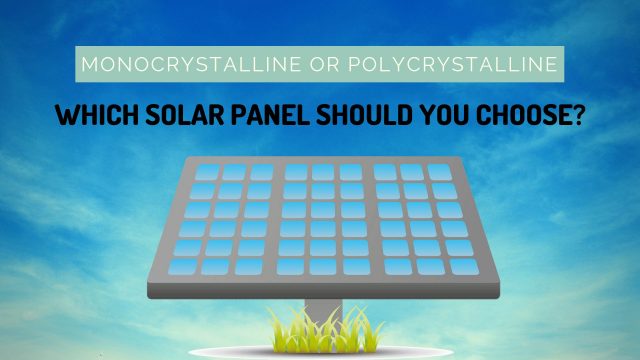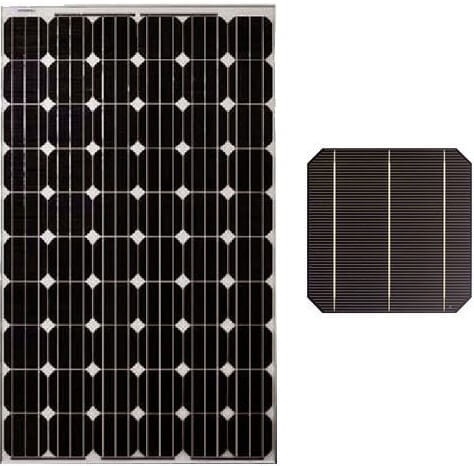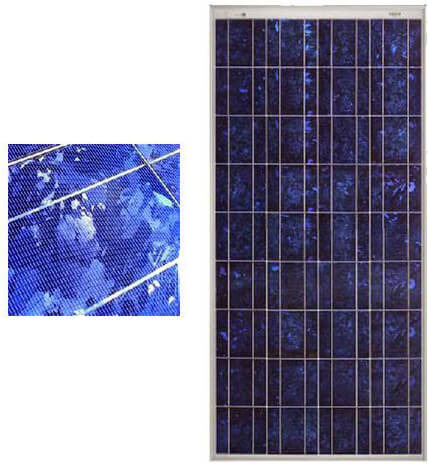This article was updated on June 08, 2023
If you are thinking about getting solar panels for your home, the choices can be very confusing.
However, there are companies like Our Solar Energy that can help you in distinguishing the difference between these solar panels.
There are plenty of variables to consider when buying a solar panel system.
Here we will enlighten you to understand each type of solar panel recommended for homes and helped you arrive at an informed buying decision.
Solar panels that are available in the market come in different types.
To help you sort through them, we have listed their benefits and drawbacks and then explore what type of panel would be best for certain scenarios.
What is Crystalline Silicon?
Almost 90% of all the photovoltaics today are made of different variants of silicon. This silicon in photovoltaics cells takes many forms and to distinguish their difference; you need to know how pure is the silicon used.
Purity in silicon means the perfect alignment of their molecules. If the alignment is perfect, then the solar cell is better in converting the solar energy into electricity.
This purity goes hand in hand with the efficiency of the solar panels.
However, the processes employed to improve the clarity of silicon are quite expensive. The basis for the two types of solar panels is crystalline silicon.
Monocrystalline Silicon Solar Cells
The monocrystalline solar panels are made with monocrystalline cells from silicon ingots that are cylindrical in shape.
In order to optimize costs and performance of these solar cells, a process removes the sides from the cylindrical ingots to form the silicon wafers.
This gives the monocrystalline silicon cells their distinguishing feature.
To know mono from polycrystalline at a glance, all you have to do is to look at their shape. Polycrystalline solar cells are perfect rectangles without the rounded edges.
Benefits
- Monocrystalline solar panels are very effective with an efficiency rate of around 15-20%.
- Monocrystalline solar panels are also space-efficient. Due to their high efficiency, they can produce higher electricity outputs with the least amount of space compared to other types of solar panels. If you compare them with thin solar panels, it can generate electricity up to four times more than what a thin film solar panel can produce.
- They are durable and can live up to 25 years. Most manufacturers of monocrystalline solar panels can offer this much guarantees because they trust their product live longer.
- They can perform better than the rest of the types of solar panels in low light conditions.
Drawbacks
- They are the most expensive type of solar panels. For a homeowner who is pondering on the idea of going green but on a tight budget, the better choice will be polycrystalline solar panels because they are less expensive.
- In some instances where monocrystalline solar panels are covered with dust, dirt, shade or snow, the entire circuit tends to break down. The solution is to install micro-inverters. It ensures that the whole array is not affected if one panel has shading issues.
- Monocrystalline solar panels are made through a process called Czochralski, after the scientist who invented it. The resulting cylindrical ingots are cut out on the sides to make silicon wafers. This process involves a lot of the original silicon ending as waste.
- Monocrystalline solar panels are more efficient in warm temperature. If the temperature is in the extremes, its performance suffers. The temperature factor is not very important for the homeowners though.
Polycrystalline Silicon Solar Cells
This solar panel does not require the Czochralski process; instead, it is produced by melting raw silicon and pouring them into square molds.
The cooling rate varies, and the uneven setting often creates different crystals, hence the name. This gives the panel an uneven color and spark. When it cools down, it is cut into square wafers.
Benefits
- The process of making polycrystalline solar panels are easy and simple, therefore cost much less. It also has less waste compared to making monocrystalline. If you are looking for a lower priced solar panel, this is the best candidate for you.
- The polycrystalline panels have lower heat tolerance. It has a shorter lifespan and tends to perform lower than monocrystalline solar panels in higher temperatures.
Drawbacks
- It has an efficiency of between 13%-16%, which is lower than monocrystalline. This is because they have a lesser silicon purity. The structural inconsistency at the joints where the two different crystal meet also contributes to the loss of internal efficiency.
- The polycrystalline solar panels also require more space. Since they have lower efficiency, you will need a larger array of these solar panels as compared to using monocrystalline. This may not be possible in households that have limited space on their roofs.
- Aesthetically it is not pleasing because you will not have a uniformed look.
Related: The Most Efficient Solar Panels Currently Available on the Market
What is the best solar panel for the homes?
The best solution is to have your house inspected by an expert to know the appropriate solar panel. There are also other things to consider that can influence the decision.
Limited Space
If you do not have enough space or you want to limit the space that your solar panels are taking up the best option will be monocrystalline since they are space-efficient and can produce more electricity.
However, deciding is not as simple as black or white. You have to take into consideration different situations too. For instance, monocrystalline tend to be more expensive.
Therefore, choosing between monocrystalline and polycrystalline depends on your situation and preferences.
If you have more cash to spare, monocrystalline panels are the best choice. It takes up less space while maximizing the energy output.
If you are planning to lease your solar panels and they will pay a fixed rate, then polycrystalline is perfect because you will get the same amount of energy at a lower investment.
Bottom line is the best choice between the two will be the one that serves its purpose for you.
When you are at the crossroad in making a decision, it is best to consult the experts at EnergyMatters.com.au. They have the best innovative products for photovoltaic applications in order for you to harness the maximum output from the sun.



